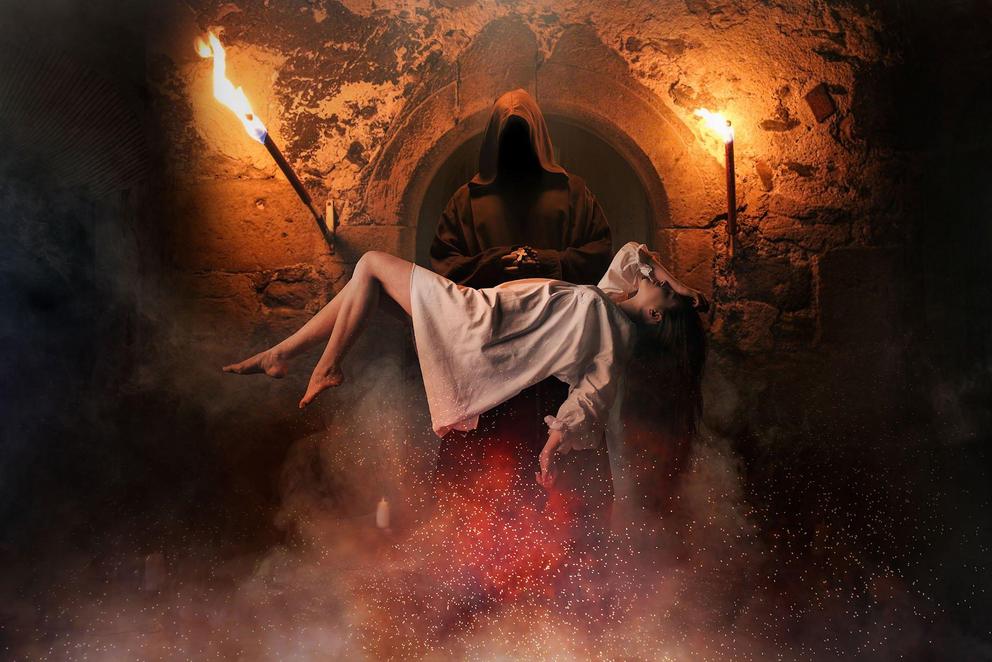Demonic exorcisms in the temple schools of Mesopotamia
In the temple-schools of Mesopotamia, students learned exorcism rituals, how to mix healing atonements, perform astrology, and how to cure demonic possession. While these skills may seem archaic now, the temple-schools actually served as the first medical schools.
They even trained their students on the study of contract law, ethics, medical billing, and accounting. They were hubs of intellectual activity. The temple priests produced text books to train young In the temple-schools of Mesopotamia, students learned exorcism rituals, how to mix healing atonements, perform astrology, and how to cure demonic possession. While these skills may seem archaic now, the temple-schools actually served as the first medical schools. medical students, the candidates of the priesthood. Thanks to the meticulous record-keeping of the Sumerians, archaeologists are able to study their early medical knowledge and religious beliefs.
Spirit Sicknesses of the Sumerians
What scholars have found is that the Sumerians believed certain spirits caused specific diseases, which could be identified through a patient’s symptoms. This spirit entity would enter the body through the patient’s head. It was important for the priest to know the name of the entity so that he could prescribe the right treatment. It was as though the names of the demons were the names of the diseases. For instance, one tablet refers to the practice of rubbing someone’s head with butter and milk so that they be cleansed of the “head disease of heaven.”
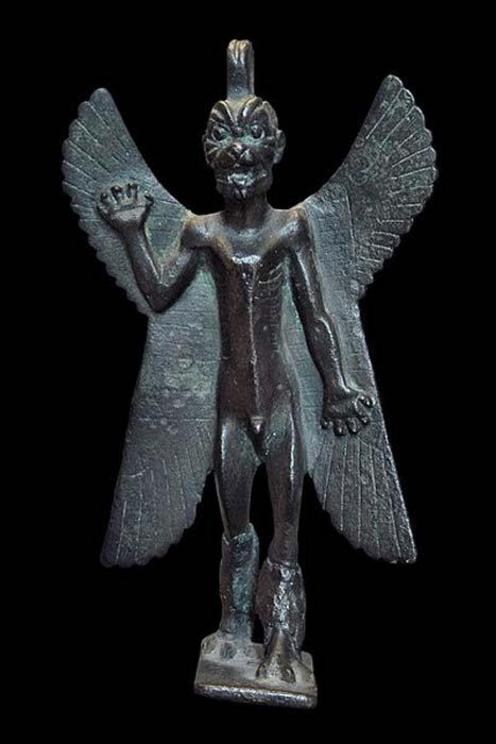 Demon Pazuzu statuette, first millennium BC, Mesopotamia/Assyria. Louvre Museum.
Demon Pazuzu statuette, first millennium BC, Mesopotamia/Assyria. Louvre Museum.
Possessions in Mesopotamia were not limited to diseases of the head. Symptoms of demonic possession could be felt throughout the entire body. According to another tablet , symptoms of demonic possession can begin in the muscles of the body. The possessed patient can have fever and chills, as well as intestinal problems, pain in the abdomen that radiates to the back, as well as chest pain. In this case, the demon did not attack the head, however the treatment called for purifying the patient with water, then wrapping his head with a bandage and juniper leaves. He must leave this bandage on for one full day, then discard it. This method supposedly drew the demon out of the patient's skull.
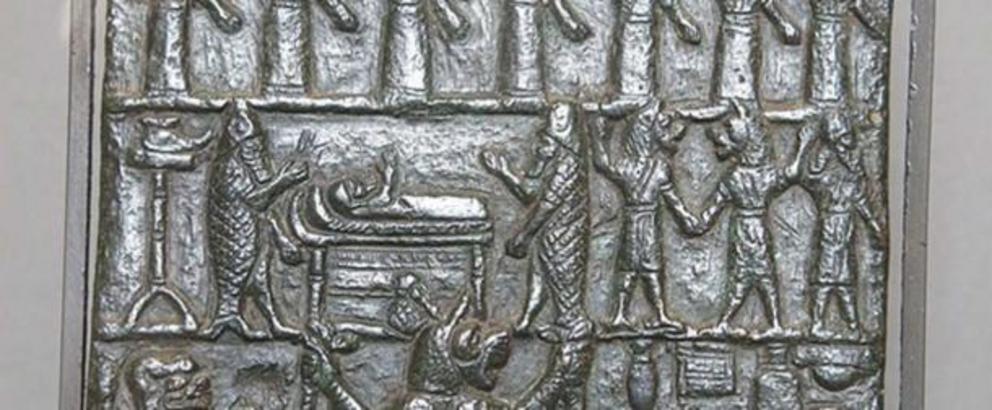 Conspiracy plate against the evil goddess Lamashtu, called "Plaque of the Hells". Neo-assyrian time.
Conspiracy plate against the evil goddess Lamashtu, called "Plaque of the Hells". Neo-assyrian time.
The Mesopotamian Hell Plaque
One specific exorcism rite is detailed on a bronze figure of the demon Pazuzu, whose outstretched arms are holding a tablet depicting symbols similar to those on the boundary stones, a type of stone document used that records the end of one land and the beginning of another. It is a small amulet, only about 5 and a half inches (14 cm) high, by 3 and a half inches (9 cm) wide. It is referred to as the Hell Plaque.
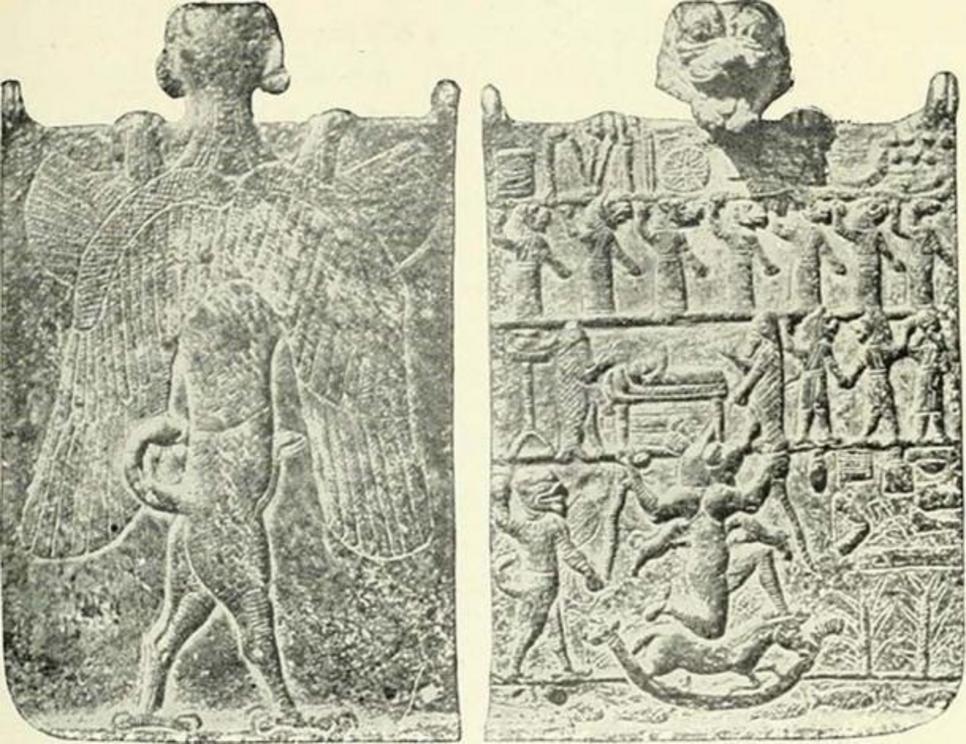 Known as the “Hell Plaque,” this amulet held by the demon Pazuzu, would be placed at the bedside of the possessed. It depicts the demon Lamashtu, Pazuzu’s wife, on the front of the plate.
Known as the “Hell Plaque,” this amulet held by the demon Pazuzu, would be placed at the bedside of the possessed. It depicts the demon Lamashtu, Pazuzu’s wife, on the front of the plate.
On the top first row are divine symbols like those typically found on boundary stones, including the symbol of Utu. Utu (later known as Shamash) was the ancient Mesopotamian sun god. He represented truth, justice, and morality. According to Sumerian mythology , Utu was the twin brother of the goddess Inanna, the Queen of Heaven. He would spend his days travelling through the sky in a sun chariot, keeping a watchful eye on all the humans below. It was believed that he was very powerful and would intervene between demons and humans to help those in distress and enforce divine retribution.
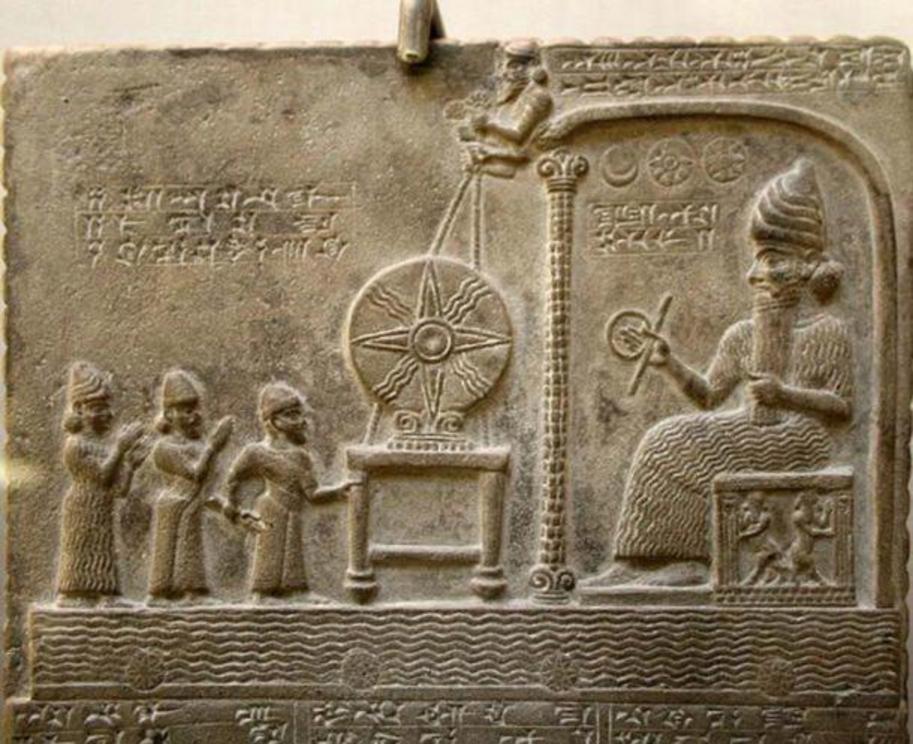 Cropped image of the Tablet of Shamash (Utu) showing the figure of Shamash (Utu) on the throne.
Cropped image of the Tablet of Shamash (Utu) showing the figure of Shamash (Utu) on the throne.
Utu was depicted as a solar disc . This appeared as a circle with a four-pointed star pointing to the cardinal directions, like a compass. Overlapping that were four wavy lines stemming from the center between each of the points on the four-pointed star. This symbol is seen all over Mesopotamian art, as it symbolized warmth and light from the sun, as well as power.
Also included on the top, are the symbols for other deities such as Ea, depicted by a mace with ram's head, Marduk by a spear-head, Adad by a lightning fork, Nebo by his double staff, Ishtar by an eight-pointed star, Sin by the crescent, and the Sibitti, identified with the Pleiadean star system and depicted as seven circles.
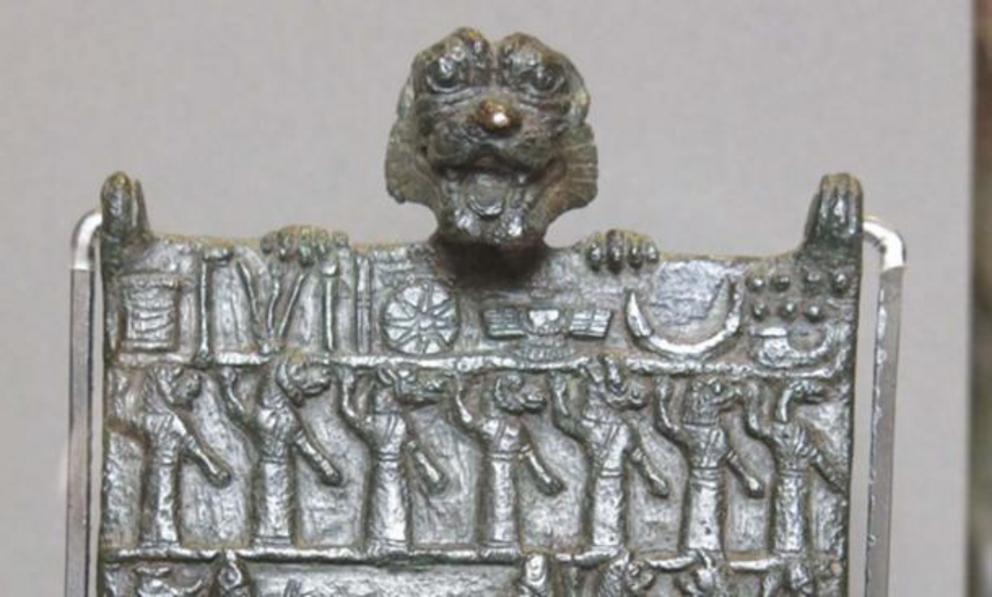 Top row shows symbols of Sumerian deities, the second row depicts 7 gallu (ghouls).
Top row shows symbols of Sumerian deities, the second row depicts 7 gallu (ghouls).
The second row shows seven gallu, (the earliest root of the word ghoul), demons that carried victims off to the Mesopotamian underworld , having the heads of animals. These animal-human hybrid beings are a common element among human depictions of demons. It is a theme that arises from the pressures of adapting from a primitive or wild existence to one that is more civilized. This theme is found throughout ancient art and proto-literature, hinting to a dualistic concept of “good versus evil,” or the struggle between wild man and civilized man.
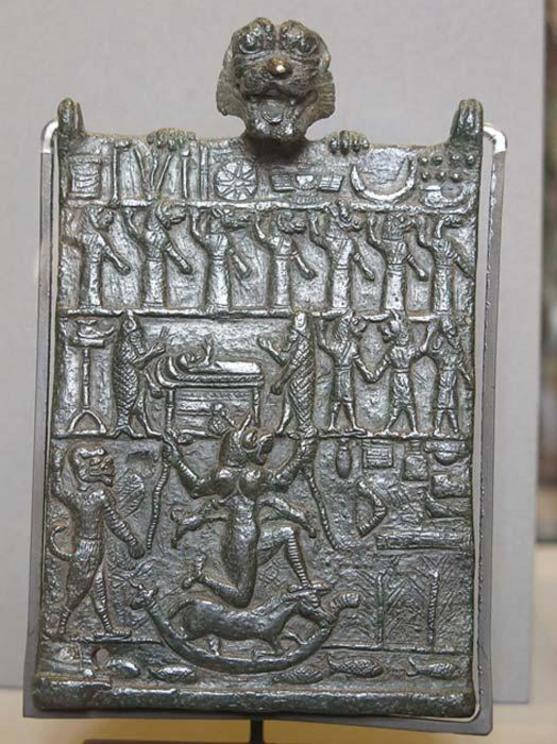 Exorcism rite on the Hell Plaque.
Exorcism rite on the Hell Plaque.
The Exorcism Rite of the Hell Plaque
The third row of the Hell Plaque shows the actual exorcism rite. In the middle, there is a possessed person lying on a bed. At the head and foot of the bed are priests, which are identified by their fish-like robes, indicating that they are priests of the water god, Ea. There is a demon behind the right priest who is holding two other demons at bay. The other priest is holding a lamp, which symbolizes the god of fire, Nusku.
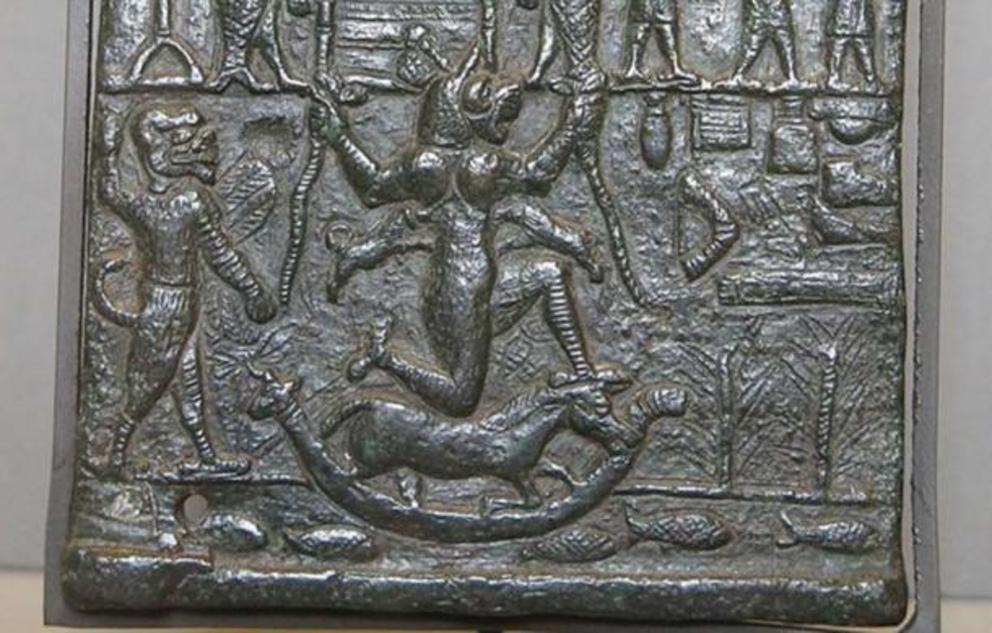 Bottom part of the plaque depicts the demon Lamashtu and her husband Pazuzu
Bottom part of the plaque depicts the demon Lamashtu and her husband Pazuzu
The last row shows objects such as a bowl, water bladder, two jars, and various foods. These are offerings for the demons. In the very center of this last row is a large depiction of the demon, Lamashtu, who is holding a snake each hand. She is breastfeeding two pigs and kneeling on a donkey, which is her symbol. The donkey is resting on a ship, sailing on water where there are fish swimming from left to right.
To Lamashtu’s left is her threatening husband, Pazuzu, who is trying to attack her with a whip. Pazuzu was summoned by the priests to defend the patient from her. The demon Pazuzu was often invoked to protect pregnant women and mothers against Lamashtu, because she would steal their babies out of jealousy. This was the explanation for miscarriages, still-born infants, and sudden infant death, making tablets and amulets of Pazuzu some of the most popular in ancient Mesopotamia.
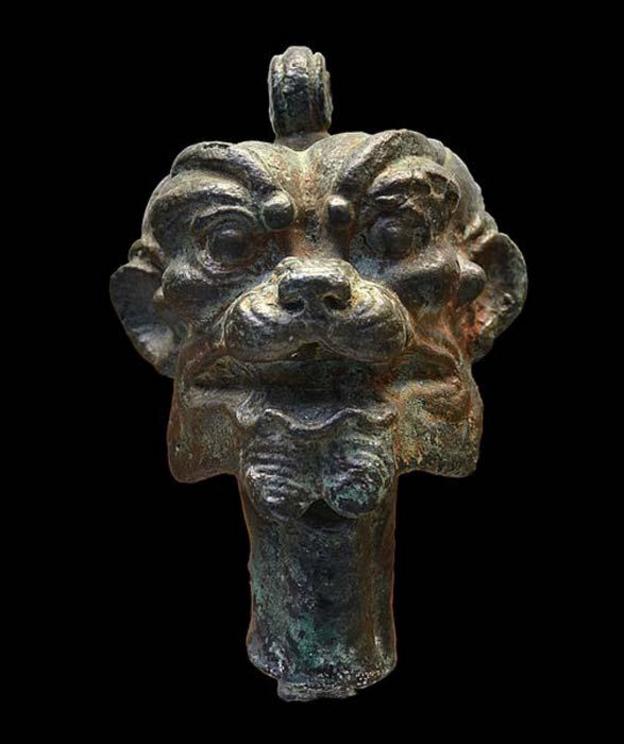 Bronze head of Pazuzu, Mesopotamia (probably from Nimrud), 900-612 BC, now in the room 56 of the British Museum.
Bronze head of Pazuzu, Mesopotamia (probably from Nimrud), 900-612 BC, now in the room 56 of the British Museum.
The Extensive Otherworld of the Sick Sumerians
The Sumerians did not believe in just one type of spirit. They believed in entities similar to demons, devils, and even ghosts, all of which could enter a person through possession. Some were demons from the underworld while others were simply sad, lost souls. In order to know the difference, the exorcist would pay close attention to the patient’s symptoms, as well as consult his manual.
For example, if a person in life was unloved, abused, and neglected to the point wherein they were starved to death, that tortured soul would seek to inhabit the body of someone else. Once in that body, however, their maligned nature would be expressed in the patient. This could make the patient feel symptoms of depression, loneliness, nausea, loss of appetite, chills, and weakness. Therefore, the healing rite, or exorcism, could include making a nice meal for the spirit and offering it positive affirmations, in addition to medicinal herbs.
This practice offers a glimpse into the minds and hearts of ancient Sumerians. Regardless of the science or logic, one thing it does indeed show is a level of compassion on the part of the ancient people.

